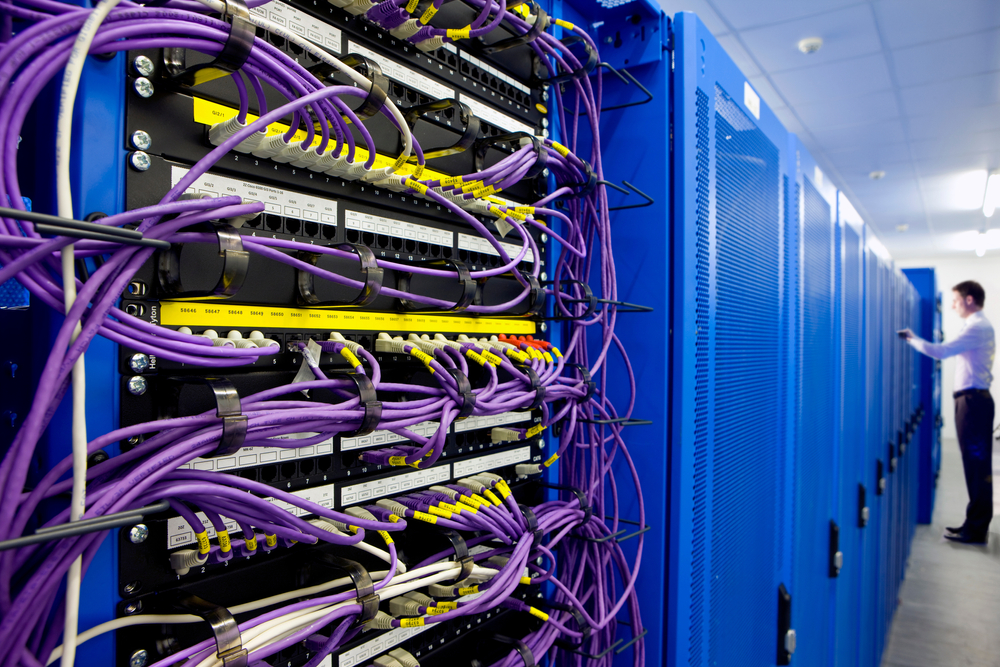
We’re keeping an eye on local area network trends to bring you the most up-to-date information about your networks. Whether you’re familiar with your current set-up or you’re exploring new possibilities, we’re exploring what the future of LAN looks like.
A Brief History of the Local Area Network (LAN)
The humble LAN – local area network – is the network that connects endpoints in offices and factories around the globe to network “services”. This network allows those endpoints to access data, run machinery and a whole host of other features. Users can extract and manipulate the data accessed to produce some outputs, service customers and other work at the endpoint. In simple terms it’s vital, but things are changing.
Over the last 30 years, the LAN has evolved from Token Ring LAN to BNC/Coax LAN to the modern Gigabit Plus ethernet that we know today. We also now have organisation-wide Wi-Fi that works wherever you are so users are not tethered to desks, and you can get additional kit onto your network without adding lots more cabling.
In that time, speeds have increased, and we can now access our network services wirelessly. We have added devices beyond simple laptops, desktops and mobiles to the LAN. So what can we expect from future local area network trends? And is this potentially the end of LAN?
Network Services
Here’s a thought. Those network services that you use your LAN to connect to – where are they?
- In your office or other workplaces.
- In a co-location centre or other central data centre.
- In the cloud – either public ‘infrastructure as a service’ (IaaS) or, more often, a ‘software as a service’ (SaaS) product – such as Salesforce, Dynamics 365, or some other part of the Microsoft 365 eco-system.
Since the pandemic, how many of those network services have been accessed across a local area network? Any workers who were on-site during that time will have used the LAN. Consider if any remote workers have accessed it, and any other modern working arrangements you have for your staff. The same applies to long-term home workers who are using a ‘virtual private network’ (VPN) to access a co-location centre or, more often now, are using a SaaS platform.
80% Won’t Return to the ‘Old’ Normal
During the pandemic, we hosted a webinar on the topic of ‘Modernising IT Working Practices within the Modern Workplace’. We explored the flexibility and consistency it brings, its capability and the potential productivity increases it can bring.
During the webinar, we conducted a survey, and one of the key stats was that 80% of those surveyed had no intention of fully returning all of their staff to offices and factories when the pandemic ended. Moreover, most of those surveyed didn’t want to go back to the office at all. So what can we learn from this one stat? If you rarely, if ever, go to the office, why do you need the LAN?
IoT and Industrial Control
It seems like the local area network would be required for organisations with a factory or other large infrastructure that needs monitoring. However, that’s not necessarily the case, at least not in the way you would think. IoT, or the Internet of Things, is now a commonplace term that wraps up things like water pipe monitoring, feedback from industrial control systems, or even the doorbell or heating system at your house. But these devices transmit their data and consume services from somewhere other than the LAN.
Where Are My Services?
If you’re reading this from home, consider where the network service provides the hosting for this. When you send an email, it’s most likely provided by or passing through a cloud service that isn’t at your office either. When updating your customer relationship manager (CRM) system, it is probably utilising a SaaS application. The above example of the industrial pipe monitoring solution likely connects to the internet over 4G or 5G. It’s unlikely a local area network has been involved.
Future Local Area Network Trends
There is still a place for the local area network, but with the rise of cloud computing and the dispersed nature of many workforces, the LAN as we know it will often be the local ones over Wi-Fi in peoples’ homes. Older organisations will not likely see network upgrades for some time to come, if ever. With 5G now standard and the promise of gigabit speeds for a fixed monthly fee, you may find office staff getting frustrated with the slow office internet connection. They may end up tethering to their mobiles anyway – making the LAN just a way to heat the room!
In factories and similar workplaces, the LAN still has its place, but more so as devices that talk directly to data at one of the big cloud vendors. While LAN isn’t essential for that, some companies will probably continue to utilise it for a while. But not forever.
So while we monitor local area network trends, it’s worth broadening your horizons and exploring alternative solutions. Now is the time to focus on cloud productivity, cloud security, endpoint security and the occasional firewall for those large, centralised data centres.
How Can Optimising IT Help?
We have been operating with a cloud-based, LAN-less environment for the last decade. Since the pandemic, we have seen a huge rise in customers moving to a fully flexible, seamless and consistent cloud-based approach. We have delivered multiple modernisation projects to enable seamless, flexible working from anywhere across many sectors. These include education, manufacturing, recruitment and business services. With almost unlimited scale and unparalleled flexibility, using the cloud as your first choice has changed from being a consideration to the first choice for many.
We stay up to date on local area network trends to make sure we can offer you the best advice and services. So whether you are still using a historical set-up or have had a recent upgrade, we can make sure you’re suitably optimised for your workplace.
If you would like an evaluation of your environment and IT requirements to see how you could modernise them to support a new way of working, get in touch today, and one of our cloud specialists will contact you to discuss the next steps.












